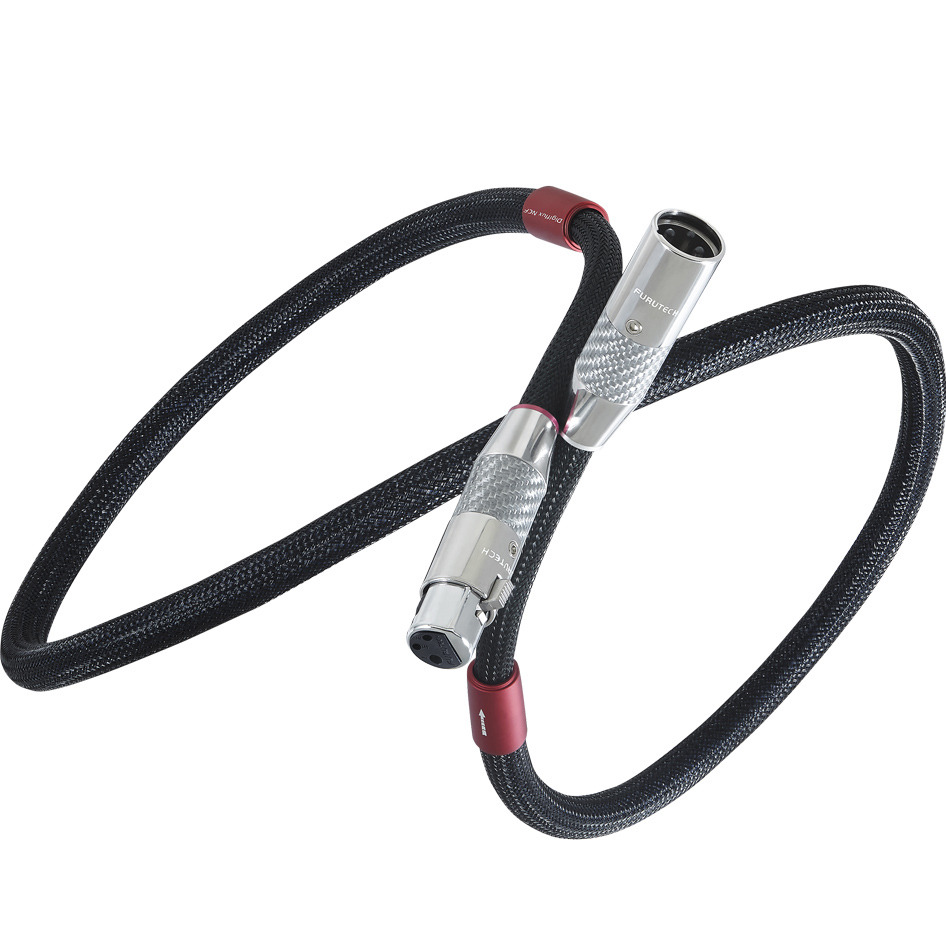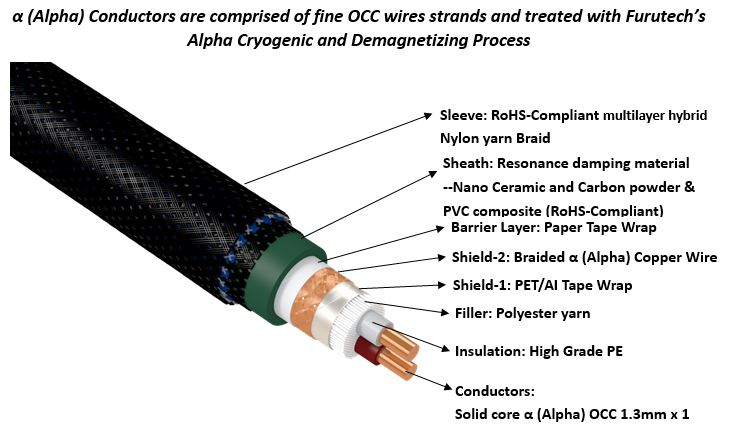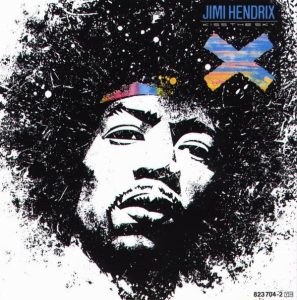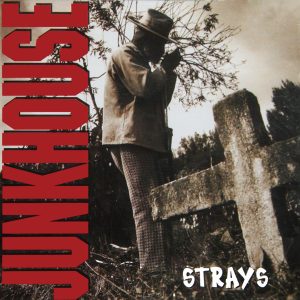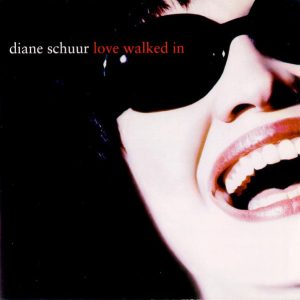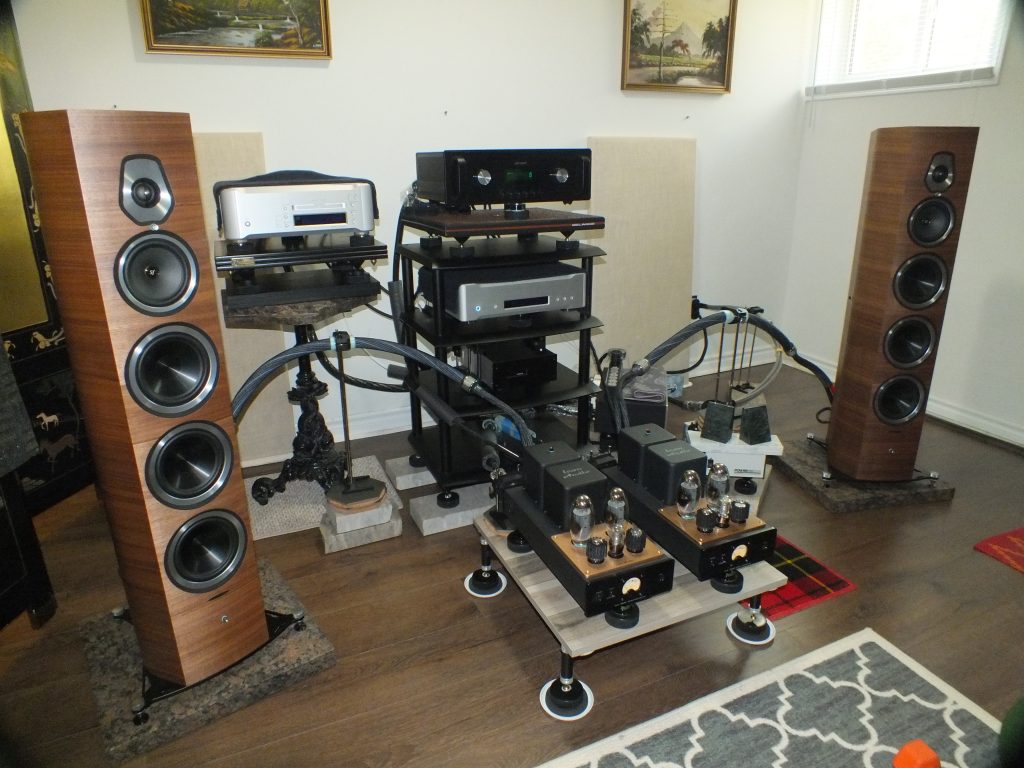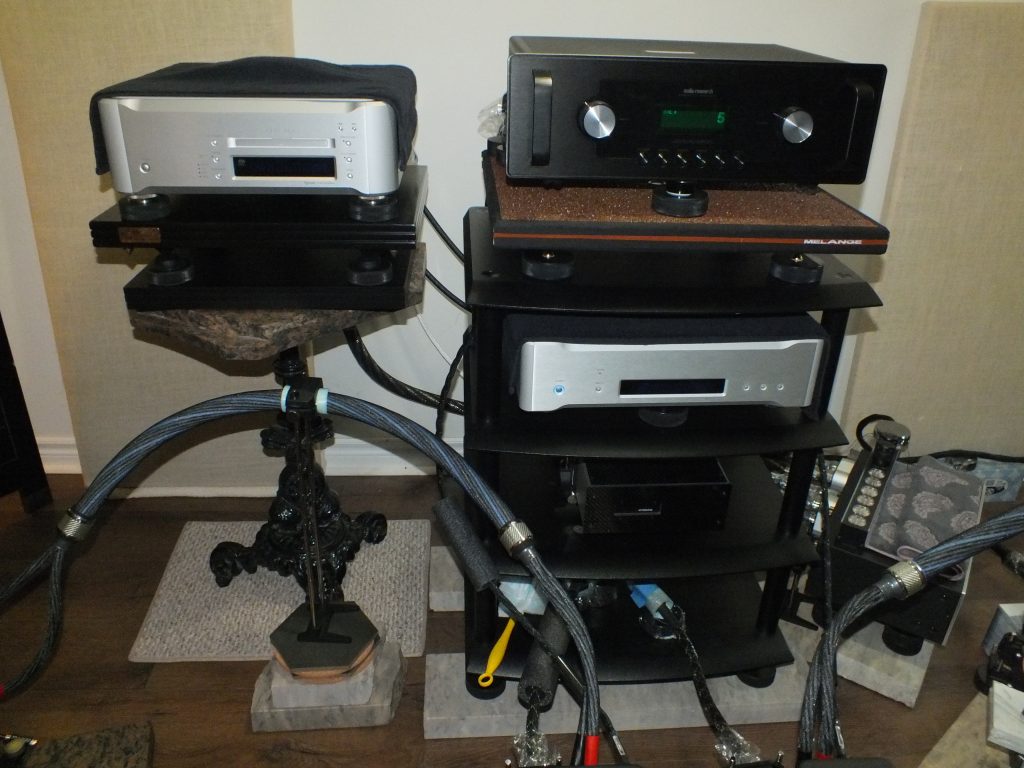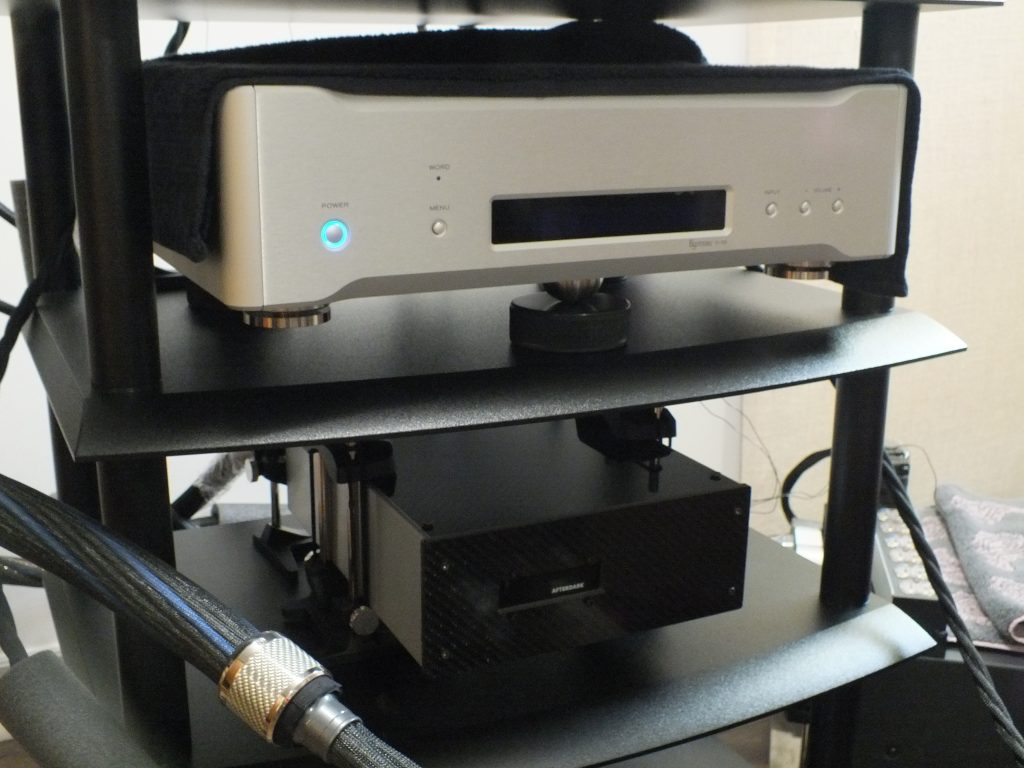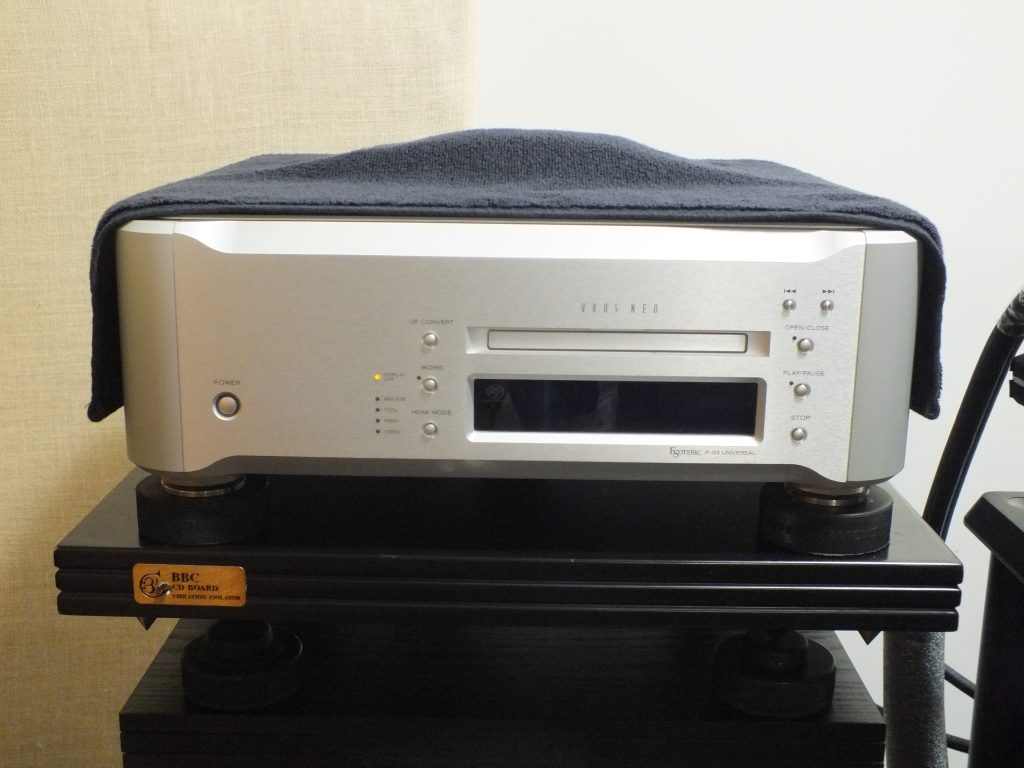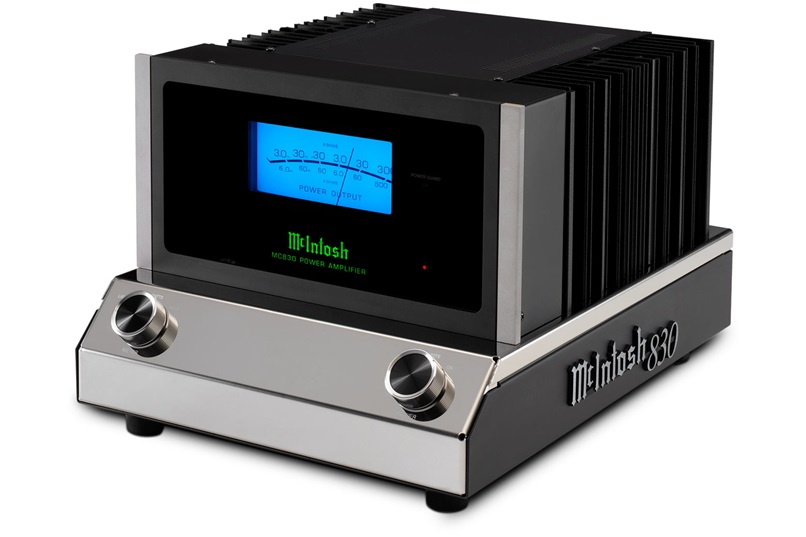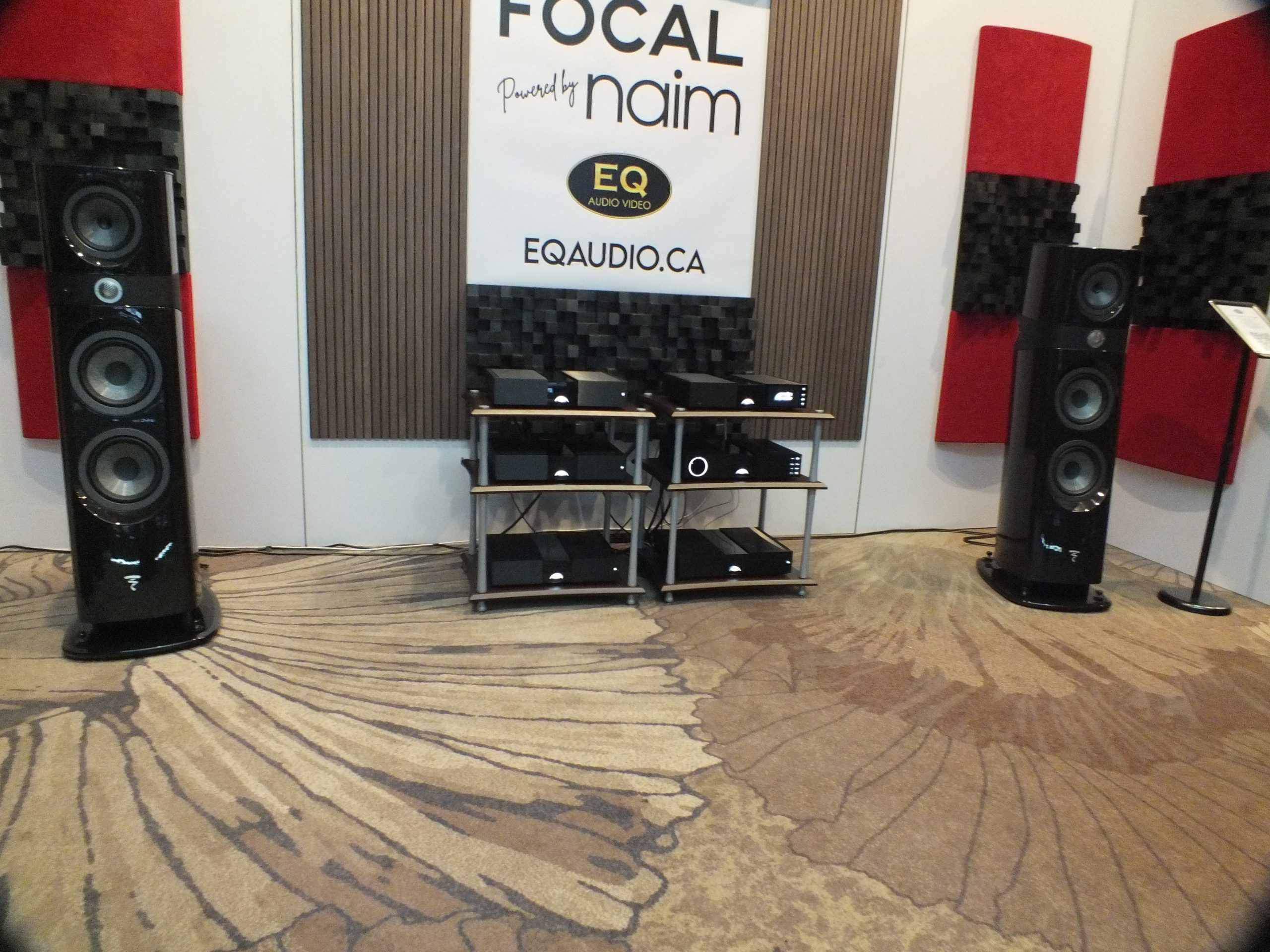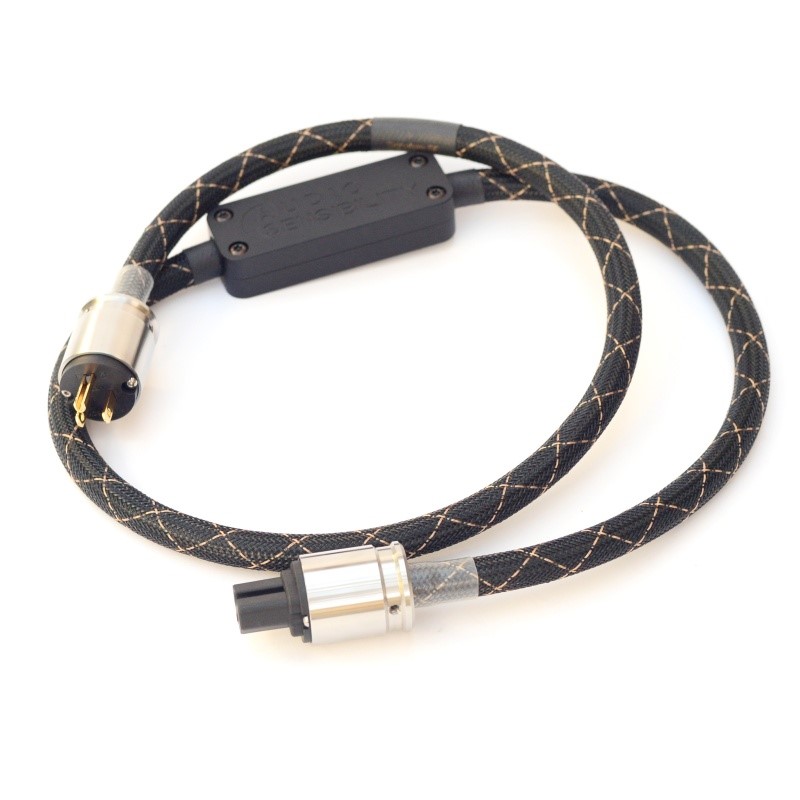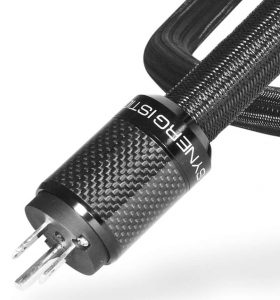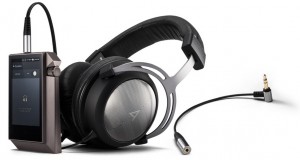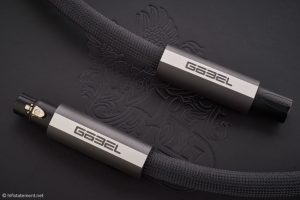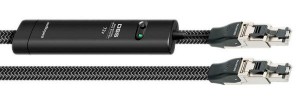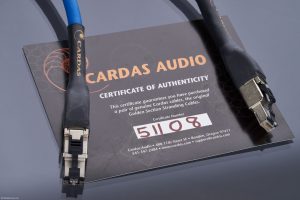Sometimes reviewing high-end audio cables can feel like checking-in for an overbooked trans-Atlantic flight and being assigned the middle seat in economy class. Ohhh yeah… that torturous middle seat where you're stuffed in between the adjoining aisle seat and window seat. On your left, there'll assuredly be someone with scorching halitosis whom can't stop droning on and on about some trivial story from their past. On your right, there'll likely be an exhausted woman clutching a screaming, teething, toddler with eye-watering flatulence and explosive diarrhea. I'd rather suffer through a 4-hour root canal surgery than to have to undergo sitting in that middle seat for 10 to 12 hours.
Audio reviewers hate doing mid-level cable reviews because they're more emotionally and physically painful than undergoing a simultaneous tax audit/colonoscopy. When I say hate, I mean we hate—capital H.A.T.E.—taking on these assignments. It's like when Nikolai Volkoff and the Iron Sheik joined forces as a tag-team back in 1986. There was genuine soul-felt hatred for those two pro-wrestling villains.
The one good thing about mid-level cable reviews is when, once in a blue moon, a wire punches way above its weight class and outperforms cables costing four or five times as much. That, however, is an exceedingly rare thing.
When Simon Au of AuDIYo Inc™ in Toronto informed me that Furutech had unleashed a new top-of-the-line 110Ω AES/EBU interconnect, I wasn't entirely sure if I wanted to suffer through that middle-seat Hell again. Down through the decades, I've swallowed so much nonsense from cable distributors that today I'm…big SIGH…jaded.
If you swallow too much in life, it tends to come back up. I suppose that's why I always keep an airline barf bag handy when I'm talking to audio wholesalers. At times, their B.S. knows no boundaries. Curiosity got the better of me, though, and I borrowed a 1.2m Furutech Digiflux NCF 110 Ohm AES/EBU interconnect to give it a listen.
Product Description
Founded in 1988 in Tokyo Japan, specialist audiophile parts and cable maker Furutech have a proud and honorable 35+ year tradition of fabricating world-class plugs, connectors, A/C outlets, and cables. The new balanced XLR Digiflux NCF AES/EBU digital interconnect, ($1138 USD or $1577 CAD for each 1.2m length cable), replaces the older discontinued Digiflux AES model. An S/PDiF version of the NCF digital IC is also available.
The acronym NCF' in the Digiflux NCF AES/EBU cable's name stands for "Nano Crystal² Formula." Furutech claims that this crystalline NCF material has two active properties. One, it supposedly generates negative ions that minimize static. And two, they believe that NCF converts thermal energy into "far infra-red" energy. Furutech combines the NCF material with nano-sized ceramic particles and carbon powder which, they also posit, increases the cable's mechanical dampening properties.
The wire in the Digiflux NCF AES cable is made of a solid-core α (Alpha) OCC copper (Cu) conductor that's double-shielded. A high-grade polyethylene di-electric and a composite sheath are used to further dampen mechanical resonances and reduce noise.
Image courtesy of Furutech
Furutech custom fabricates the CF-601M male NCF XLR connector and CF-602F female NCF XLR connector in house. The XLR plug's pins are rhodium-plated pure copper (Cu) that are injected with a heat resistant NCF liquid crystal polymer resin.
For a deeper technical dive, please visit Furutech's website at:
The Digiflux NCF AES cable's diameter is 13.0mm. Although this interconnect is reasonably flexible, it's stiff along its rotational axis. You'll need some space behind your equipment rack to line-up the 3-pin XLR plugs with the components that are being connected.
Set-up, Break-in, and Initial Sonic Impressions
I installed a 1.2m Digiflux NCF 110Ω AES/EBU digital IC into my headphone system between an Assemblage D2D-1 upsampler and a heavily modified Musical Paradise MP-D2 Mk#2 tube DAC. I let the NCF cable burn-in for about 30 hours before giving it a listen.
The first CD that I tried was Jimi Hendrix's Kiss the Sky (Polydor 823704-2). Three seconds into the album, I was literally—not figuratively…but literally—shivering. I bought this disc waaaay back in the autumn of 1985. For me, the songs on it are like comfort food. Much to my surprise, I was clearly hearing low-level sonic details which I'd never heard before.
Examples...? On the first track "Are You Experienced?" I noticed how deftly Mitch Mitchell syncopated his cymbals with Hendrix's rhythm guitar lines. Instead of being buried underneath other instruments, the percussive bite of Mitchell's cymbal work was right there for me to hear.
The dynamic energy, PRaT, and timbral accuracy of the 110 Ohm Digiflux NCF IC was impressive. Hendrix's frenetic guitar pyrotechnics came through with the riveting force that his stunning live shows and expressive in-studio playing always had. Soundstaging and image placement were precise and accurate.
Studio Czar Eddie Kramer did a hero's job of capturing Hendrix's hyper string-whipping guitar solos, catchy rhythm lines, and haunting vocals. Kramer's positioning of the guitars, bass, and drums in and around Jimi's voice was NOT an accident. Very few balanced digital AES cables that I've ever heard have properly revealed how well these classic Hendrix songs were originally recorded.
Listening to the song "Purple Haze," the double-tracked and triple-tracked vocal lines layered underneath Jimi's caffeinated guitar riffs were clearly delineated. The rhythm guitar chords in the song "Third Stone from the Sun" sounded softer and more expressive than I remembered. Hendrix's heavily distorted voice that repeats the lines "Your mysterious mountains. / May I land my pinky machine." were reproduced cleanly. Previously I'd thought some of these echoing vocals were nothing more than low-bass distorted gibberish. Hearing this kind of detail gave me more insight into what, sonically speaking, James Marshall Hendrix was trying to do with the song.
That Sunday afternoon when I first heard how good the Digiflux NCF AES cable sounded, I decided that I needed to do a full review this digital cable.
Comparing AES/EBU ICs
In ultra high-end audio, good is the enemy of great. If you accept that a good interconnect that performs adequately is good enough, then trying to improve its sound quality becomes unnecessary. It's important to remember that sonic advancements in cable design happen rapidly. What was "state-of-the-art" just two or three years ago is quickly surpassed.
Furutech's Digiflux IC versus the Digiflux NCF AES/EBU Interconnect
I first compared Furutech's standard 1.2m Digiflux AES/EBU (MSRP $1078 USD) digital interconnect to the new flagship 1.2m length Digiflux NCF (MSRP $1138 USD) AES cable.
The regular Digiflux AES cable has now (November, 2023) been discontinued. Although these two AES digital cables have the same "house sound," the NCF version has noticeably better PRaT, faster transients, superior timbral accuracy, and—most importantly—a much lower noise floor. The NCF AES interconnect is about 20% quieter than the standard 110Ω Digiflux cable.
An AES cable with a lower noise floor will always exhibit superior detail retrieval. Less noise inherently means that far more low-level sonic information that's buried deep down in the recording can be unearthed. The 20% lower noise floor—that 20% louder silence—that the Digiflux NCF offers over and above the regular Digiflux AES cable is a big part of what makes the NCF sound so much better than the normal Digiflux.
The regular Digiflux isn't a bad sounding digital interconnect. Before it was discontinued, it was priced fairly and it offered decent sound. The regular Digiflux AES IC was worth its $1078 USD asking price—no question. And yet, it never sent shivers down my spine.
In comparison, the $1138 USD Digiflux NCF AES/EBU digital cable created a larger soundstage, superior image placement, better dynamics, and… overall… a far more lifelike and musical presentation. With the NCF installed, I consistently found myself shivering my way through favorite recordings.
Yeah… goosebumps. That's the difference between the old Digiflux AES cable and Furutech's top-of-the-line Digiflux NCF balanced IC. While the standard Digiflux is good, the NCF is great.
Digiflux NCF vs. a 39¢ disposable AES cable
For perspective, I next compared the 110Ω Digiflux NCF AES cable to a 39¢ disposable Radio Shaft (sic.) AES cord. The best use I've yet found for throw away cables is to strangle incompetent editors into unconsciousness. I pulled a 1.5m Costa Del Cheapo™ Chinese made 39¢ XLR patch cord out of a box that I'd planned to toss into a Salvation Army donation bin.
The walk through, 3-dimensional soundstaging I'd heard with the Digiflux NCF AES interconnect collapsed like Joe Biden attempting to climb Air Force One's dodgy staircase. God bless President Biden in his courageous battle against airline staircases!
With a cheapo Chinese XLR cable, the PRaT (Pace, Rhythm, and Timing) was more out of step than Thurston Howell the 3rd at an Antifa rally. The dynamics were slower than a snail with a level-2 concussion and its wee feet dipped in molasses attempting to walk across the gooey surface of a peanut butter sandwich. Imaging was shakier than Lizzo's blood pressure while trying to balance a gelatinous pineapple upside-down cake in both hands and concurrently "jog" in high heels on an active treadmill.
The warmth, musicality, and cohesiveness of the 3-dimensional sound that I'm used to hearing from my headphone system utterly vanished. I might as well have been listening to a distant AM radio station on a $20 clock radio from Waaly-Maart. The sound of the throw-away XLR cord was flat, cold, 2-dimensional, noisy, harsh, and… frankly… un-listenable.
It always amazes that changing one digital interconnect in my $150K level 2-channel headphone system can cause such sonic catastrophe. I almost herniated myself in the rush to re-install the Digiflux NCF AES cable.
Nordost Valhalla v2 AES vs. Digiflux NCF
Next up was a 1.25m Nordost Valhalla v2 AES/EBU interconnect ($4400 USD). The 2nd-generation Valhalla v2 was released ten years ago in 2013.
As deep as the Valhalla v2 AES digital cable's resolution goes, in my headphone system, the Digiflux NCF delivered about 10% more sound. While the v2 offers superb soundstaging and phenomenally accurate image placement within the soundstage, the Valhalla v2 sounded harsher—especially in the high frequency registers.
As 110Ω AES/EBU cables go, the sonic differences between the Valhalla v2 and the Digiflux NCF are minor and not "fist-in-your-face" violently obvious. Audio dorks who drool for high frequency extension and upper-band resolution often fall in love with Nordost's "house sound." The Valhalla v2 offers oodles of high-band detail and lots of air. And yet, in my headphone system, the Digiflux NCF created a fuller sound without imparting an over-emphasis on the high frequencies.
My only issues with the Valhalla v2 are: a), with the wrong gear, it can sound harsh in the highs and induce high-band listening fatigue; and b), its retail price of $4400 USD for a single 1.25m length AES cable is expensive. Comparatively, Furutech's $1128 USD 1.2m Digiflux NCF offers more warmth, greater low-frequency extension, and deeper resolution in the lower mid-range, upper bass, and mid-bass registers.
Digiflux NCF vs. Inakustik 2404 Reference Silver
A local audiophile friend (thanks Dan!) brought a 1.0m Inakustik™ 2404 Reference Silver (Ag) 110 Ohm AES/EBU digital cable ($4600 USD) over to my home to compare to the Digiflux NCF.
The 2404 Reference Silver AES cord unveiled marginally more detail in the higher frequency registers. It also had superb timbral accuracy and deep resolution—especially in the highs. The 2404 Ref Silver's soundstage was also slightly larger. Both AES cables created beautiful sonics in an unforced and natural sounding way.
The Digiflux NCF offered more weight—more flesh on the bones—in the lower mid-range, upper bass, and mid-bass registers. Transient speed, PRaT, and dynamics were eerily similar. Although I'd give the win to the Inakustik, I could happily live with either the Digiflux NCF or the 2404 Reference Silver AES. Both are top-shelf AES cables. The big difference is their asking prices. A 1.0m Inakustik retails for $4600 USD and the 1.2m NCF sells for $1138 USD.
Listening Tests
Released in 1993, Junkhouse's Strays (Sony Music- Epic EK80184) is a phenomenally well recorded rock album that gives voice to a wide variety of memorable songs with soul-bruising guitar riffs. In places, the music emits a strong acoustic flavor that gives some of the tracks a small-town country feel.
Featuring such epic songs as "Jesus Sings the Blues," "Gimme the Love," "Stone Horses," and "The Buffalo Skinner," the variety of instruments and sounds captured on this record will test any 2-channel stereo's ability to accurately reproduce PRaT, dynamics, and subtle instrumental timbres. From front to back, there are no "filler" tracks on this album.
With the Digiflux NCF AES cable installed, the music sent my mind cart-wheeling back to the early 1990s when I'd first heard the album. The attack, sustain, and delay of acoustic guitars had superb timbral accuracy. Front man Tom Wilson's gravel-throated lower mid-range vocals were positioned out front within the soundstage—which is where they're supposed to be.
Lower midrange, upper bass, and mid-bass notes were delicate, textured, and…again…accurate. The songs on Strays have a subtle low-end groove to them that lesser 110Ω AES cables simply do not unveil. The Digiflux NCF AES interconnect did a remarkable job of recreating the natural acoustical warmth and toe-tapping melodies of Junkhouse's music.
The Digiflux NCF also exhibited exceptional low-level detail retrieval. Examples…? In the song "Stone Horses," there's a delicate piano line that's buried deep underneath the dual vocal lines. Prior to installing the NCF into my headphone system, I'd never appreciated how emotionally moving those piano notes truly are. Yep… memories and goosebumps; they came surging back to me in waves.
Diane Schuur
Recorded in 1996, Diane Schuur's Love Walked In has shiver-inducing sonics. Featuring an ensemble cast of exceptional musicians, the jazz-inspired arrangements employed in songs like "Time After Time," "Say It Ain't So," and "Sunday Kind of Love" lets listeners sink into the evocative warmth of Schuur's sultry voice.
If you're a fan of female vocals backed by calm and soothing jazz melodies, put Love on your short-list of CDs to buy. Do you like Holly Cole? Then you'll (probably) love Diane Schuur.
With the Digiflux NCF AES interconnect, the PRaT and timbres of the wide variety of instruments used to highlight and accent Schuur's remarkable voice sounded phenomenal. With the NCF, the attack, sustain, and delay of the saxophones, French horns, trumpets, cymbals, and drums were all significantly clearer and more lifelike.
Reproduced by a mediocre stereo with inferior cabling, Love is the type of gentle jazz that can all-too-quickly become background noise in a busy sweet shop. Through a high-caliber digital rig, Schuur's coffee-rich vocals will take a listener on a wonderful musical journey. And that's exactly what the Digiflux NCF AES cable did for me. It took me on one heck of a musical/emotional ride.
Conclusion
If a 1.2m Furutech Digiflux NCF AES/EBU interconnect cost $4000 USD, I wouldn't be all that excited about it. Perish that thought, though, because the NCF retails for $1138 US dollars! I'm delighted to report that its sonics compete with other AES/EBU cables in the $4000 USD to $4500 USD range. The NCF offers a mesmerizing sound quality at, by audiophile standards, a reasonable price. Hearing this kind of performance from a sensibly priced AES cable put a demented smile on my face that could light up an entire psyche ward.
The 110Ω Digiflux NCF AES/EBU cable is as silent as the surface of the moon. It is (arguably) the quietest balanced AES digital interconnect that I've ever heard…or…not heard. This "louder silence" results in superior low-level detail retrieval that makes recorded music sound far more lifelike and believable. You can toss that airline barf bag into a recycle bin, because you're not going to need it.
Bottom line, the Digiflux NCF digital interconnect delivers jaw-dropping sonics. Beg, borrow, steal, or sell your blood for cash—whatever it takes—get at least one of Furutech's giant-killer Digiflux NCF AES cables into your digital rig.
Digiflux NCF AES/EBU Digital Interconnect
Retail: $1138 for a 1.2 meter cable
Furutech




